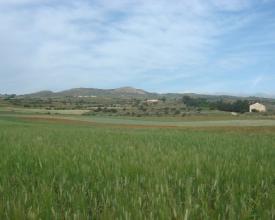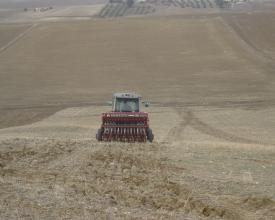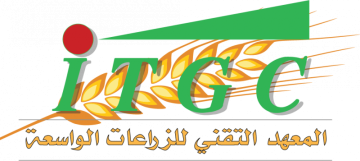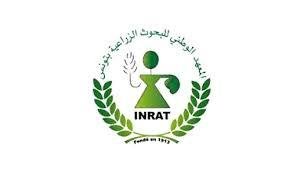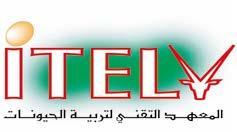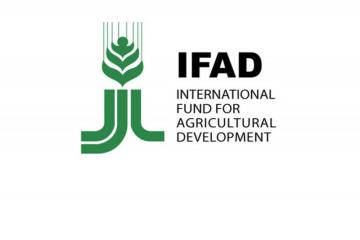
L'agriculture de conservation s'appuie sur des technologies produites localement pour augmenter la productivité tout en utilisant moins de ressources.
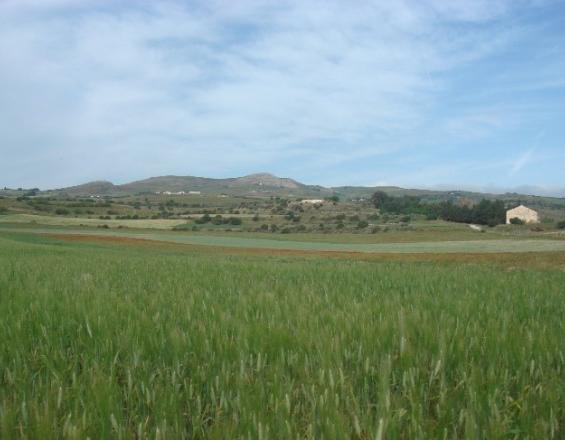
Si elle est correctement gérée, l'agriculture de conservation est généralement une situation "gagnant-gagnant" pour les agriculteurs et l'environnement. L'agriculture de conservation, souvent associée à l'élevage ou à des technologies locales telles que les semoirs sans labour, améliore la productivité des cultures, l'efficacité de l'utilisation des ressources et la santé des sols. En tant qu'alternative au labourage conventionnel dans les zones arides pluviales, elle permet d'éviter le travail du sol, d'économiser du temps et de la main-d'œuvre et de conserver l'eau et les éléments nutritifs dans le sol afin de rendre la production agricole plus résistante au changement climatique.
Contexte
Défis à relever
Le changement climatique, les conditions environnementales irrégulières et la croissance démographique exercent une pression sur les systèmes agricoles. En raison de la surexploitation pour répondre à la demande, les sols s'appauvrissent, ce qui réduit la productivité. Cela est particulièrement vrai dans les pays à revenu faible ou intermédiaire d'Afrique du Nord, d'Amérique latine et des Caraïbes, où les populations rurales sont très vulnérables à l'imprévisibilité et à la variabilité des précipitations. La fréquence accrue des sécheresses et des phénomènes météorologiques extrêmes, ainsi que l'évolution de la demande et des préférences alimentaires, ont un impact supplémentaire sur la production agricole et dégradent la biomasse. L'agriculture de conservation peut relever ces défis. Utilisée par une majorité d'agriculteurs en Australie et au Brésil, et par de nombreux agriculteurs en Amérique du Nord et dans d'autres pays à revenus moyens et élevés, cette solution peut améliorer la sécurité alimentaire et préserver les ressources naturelles dans les agroécosystèmes des zones arides d'Asie centrale et occidentale, du Moyen-Orient, d'Afrique du Nord et d'Afrique subsaharienne.
Emplacement
Traiter
Résumé du processus
L'agriculture de conservation et la formation associée à cette pratique permettent de minimiser la perturbation du sol, de conserver les résidus de culture pour maintenir la couverture du sol et la rotation des cultures, tandis que les machines locales de culture sans labour permettent de compléter l'impact positif lié à la pratique, comme une solution complémentaire à la solution de base. La technologie conçue utilise des intrants locaux et des compétences mécaniques pour élargir les marchés des réparations et des services techniques et créer des emplois locaux. Comme on l'a vu, les agriculteurs qui adoptent l'agriculture de conservation ont besoin d'une aide chimique pour lutter contre les mauvaises herbes, ce qui pourrait être économiquement moins rentable pour eux ; par conséquent, le développement d'emplois locaux liés aux machines liées à la conservation peut contribuer à éliminer ce goulet d'étranglement. Les formations auxquelles participent les agriculteurs leur permettent de développer des marchés locaux et des machines qui complètent les pratiques de l'agriculture de conservation.
Blocs de construction
Formations avec les agriculteurs
En formant les agriculteurs à l'agriculture de conservation, ils apprennent de nouvelles pratiques agronomiques intelligentes pour diversifier les systèmes de culture, économiser de l'énergie et de la main-d'œuvre et stabiliser les rendements dans les zones arides.
Facteurs favorables
- Intégration d'une approche de genre
- Engagement participatif des agriculteurs dans la formation
- Sensibilisation aux techniques d'agriculture de conservation
Leçon apprise
Pour les producteurs et les autorités communautaires, il existe des demandes spécifiques en matière d'information, de formation, de dialogue et de coordination des activités. Des approches innovantes en matière de développement agricole sont nécessaires pour informer les agriculteurs et leur démontrer les avantages de l'agriculture de conservation. Cet objectif peut être atteint grâce à des activités telles que L'accompagnement intensif des agriculteurs pour modifier l'héritage séculaire de l'agriculture conventionnelle. La formation sur le tas et la création de "services d'agriculture de conservation" pour les agriculteurs dans des domaines tels que la plantation et le contrôle des mauvaises herbes, ainsi que le soutien à d'autres questions pratiques pour l'adoption de pratiques de conservation.
Technologie conçue par l'agriculteur local
Un semoir sans labour produit localement, à faible coût, utilise des pièces et des compétences mécaniques disponibles localement pour élargir les marchés des réparations et des services techniques et créer des emplois locaux. Cet élément constitutif a permis de favoriser les subventions pour les machines agricoles de conservation et de retirer les aides pour celles affectées aux pratiques conventionnelles. L'une des innovations complémentaires de cette solution en tant que pratique est un semoir sans labour à faible coût produit localement. Le Centre international de recherche agricole dans les zones arides a travaillé avec des partenaires nationaux et des agriculteurs chefs de file pour développer, tester et promouvoir les semoirs conçus ou modifiés localement. La technologie conçue utilise des intrants locaux et des compétences mécaniques pour élargir les marchés des réparations et des services techniques et créer des emplois locaux.
Facteurs favorables
- Travailler avec les agriculteurs pour développer, tester et promouvoir les semoirs modifiés accompagnant l'AC
- Promouvoir les ressources locales
- Formation des agriculteurs en termes d'utilisation et de pratiques agronomiques
Leçon apprise
En ce qui concerne le leadership et la sensibilisation, les initiatives visant à coordonner les efforts de lutte contre la dégradation des sols sont dispersées et ne sont pas reconnues à leur juste valeur. Il est donc nécessaire de mettre en place des initiatives et des outils locaux pour renforcer l'implication et la durabilité de la solution. La technologie locale incluse dans cette solution, un semoir à faible coût et sans labour, a permis l'autonomisation des populations locales par la création d'emplois et l'utilisation d'intrants locaux.
Impacts
- Semoir sans labour : Comparés aux machines importées, les semoirs conçus par les agriculteurs locaux produisent des rendements similaires, mais offrent une plus grande souplesse de semis et un taux de germination plus élevé.
- Augmentation des rendements: En Jordanie, où la production de blé est souvent limitée par une sécheresse prolongée, les agriculteurs d'Irbid ont obtenu des rendements moyens en blé supérieurs de 16 % à ceux obtenus avec des pratiques conventionnelles, ce qui a généré des revenus nets de 296 dollars par hectare.
- Soutien du gouvernement: Après que des essais ont démontré une augmentation de 19 % des rendements de blé, les décideurs politiques marocains incluent l'agriculture de conservation dans un effort national visant à inverser la chute de la productivité agricole et à stabiliser les rendements.
- Création d'emplois locaux : La technologie conçue par les agriculteurs et associée à l'agriculture de conservation utilise des pièces et des compétences mécaniques disponibles localement, ce qui crée des emplois en élargissant le marché des réparations et des services techniques.
- Formations : Près de 1 200 agricultrices et 600 jeunes agriculteurs ont été formés en Amérique latine et dans la région du Proche-Orient et de l'Afrique du Nord.
- Rentabilité: L'agriculture de conservation réduit les intrants et la charge de travail des agriculteurs.
Bénéficiaires
Les utilisateurs des terres et les agriculteurs sont les bénéficiaires de cette solution.
Objectifs de développement durable
Histoire
Les utilisateurs des terres qui ont adopté l'agriculture de conservation (AC) ont indiqué qu'ils appréciaient énormément la réduction du travail ainsi que le coût de la main-d'œuvre et du carburant. En Tunisie, Adnen Abdrabbou a abandonné les systèmes agricoles traditionnels. Il a commencé à pratiquer l'agriculture de conservation. Il a ouvert sa ferme à l'ICARDA et à trois instituts agricoles nationaux - l'Institut national de recherche agronomique de Tunis, l'Institut national des grandes cultures et l'École supérieure d'agriculture du Kef - pour qu'ils y effectuent des essais d'AC sur le terrain. Pour Abdrabbou, l'implication des instituts a été un gage de confiance et il est devenu le premier agriculteur tunisien à mettre en œuvre cette technique. L'un des essais a duré deux décennies, ce qui en fait l'essai d'AC le plus connu dans le pays.
"En tant qu'agriculteurs, nous empruntons la terre pour une courte période et nous sommes responsables de son entretien jusqu'à ce que nous la transmettions à nos enfants et à leurs enfants", a-t-il déclaré.

